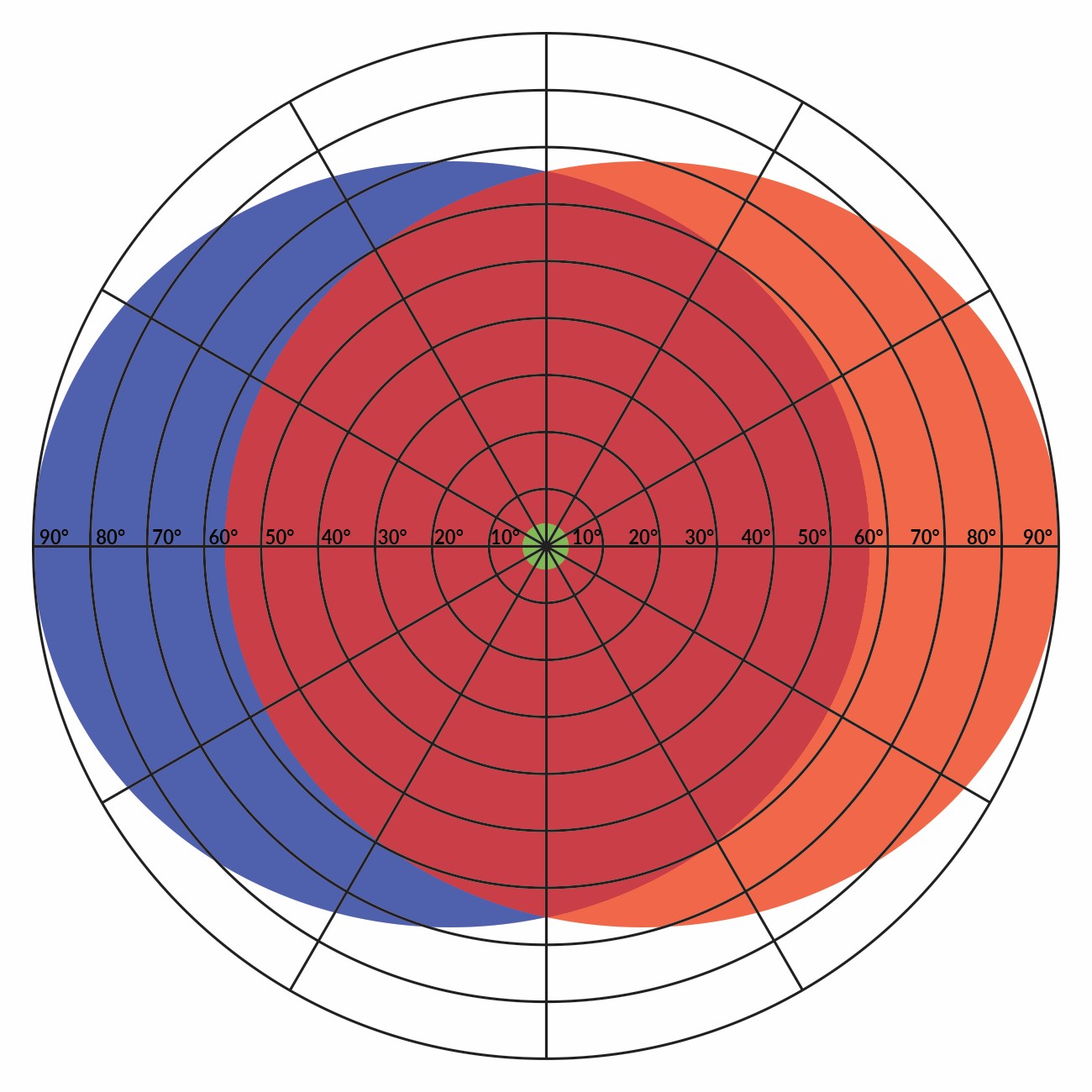Central vs. Peripheral Vision
All the Glory Goes to 20/20 Vision. We all know someone who proudly says, “I have perfect vision — 20/20!” But here’s a question for you: How much of your entire visual field is actually capable of seeing 20/20?
Let’s try a quick quiz. Pick one:
- A) 40%
- B) 10%
- C) 20%
- D) 0.004%
The answer? D — 0.004%.
That’s right. Just a tiny fraction of your visual field is actually capable of 20/20 acuity. The rest? That’s your peripheral vision at work.

What Is the Visual Field?
If you have normal eyesight, your horizontal visual field spans about 190 degrees. Imagine a full circle — your field of view is a little more than half that.
- Each eye sees around 150 degrees.
- There’s a big overlap in the center where both eyes work together (binocular vision).
You can try a simple test at home: Close one eye, look straight ahead, and slowly move your hand from the side toward your center of vision. That space where your hand first appears — that’s part of your visual field.
Visual Acuity: Like a Bull’s Eye
Think of your vision like a target:
- The center (fovea) is crystal clear and high-res. That’s where 20/20 happens.
- As you move out from the center, the image gets blurrier — that’s your peripheral vision.
Peripheral vision isn’t for reading — it’s for detecting motion, light, and contrast. It’s the reason you notice a dark shape in the corner of a white room or a flicker of movement as you walk by. Your peripheral vision is your visual radar. It tells your brain, “Hey, look over there!”
Charting the Drop-Off in Vision
Here’s what happens as you move away from the fovea (that tiny central spot on your retina):
| Degrees from Fovea | Visual Acuity |
| 0° (Fovea) | 20/20 |
| 2° | 20/32 |
| 5–10° | 20/100 or worse |
A chart like this shows how quickly your sharp vision fades. Most of what you “see” isn’t crisp detail — it’s shape, movement, and general awareness.
Why This Matters: Vision Beyond 20/20
Many conditions can affect your vision without touching your acuity. People with:
- Concussions
- Strokes
- Peripheral vision loss
- Diabetes
- Glaucoma
…might still have 20/20 central vision — but serious problems in the rest of the visual field.
Here’s a comparison:
- Macular degeneration starts in the center and moves out.
- Retinitis pigmentosa starts in the periphery and moves in — causing “tunnel vision.”
Ironically, patients with advanced macular degeneration are often more mobile than those with late-stage retinitis pigmentosa.
Don’t Take Peripheral Vision for Granted
Peripheral vision does more than fill in the blanks — it helps you move, react, and survive. It's a massively underrated part of your visual system.
So next time you have a patient with 20/20 vision that's still complaining of vision loss, you’ll know that’s just the tip of the iceberg.
